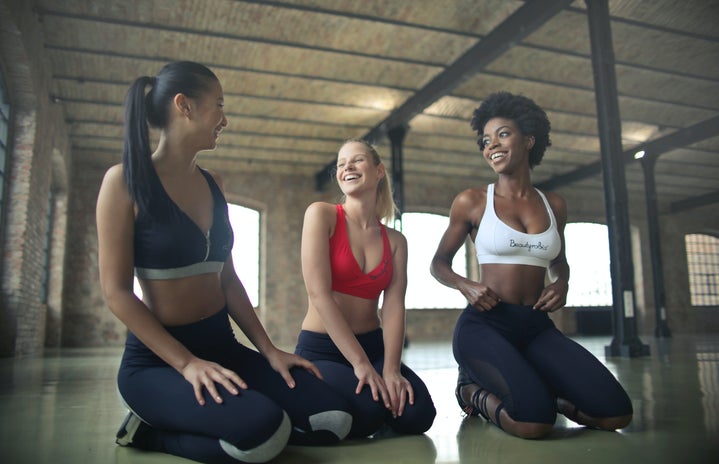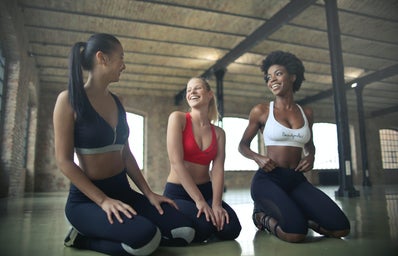Growing up in an era of airbrushed perfection, it is safe to say that most girls have probably dealt with insecurities concerning their bodies. Whether it be the muffin-top, the curvy hips, the pudgy stomach, or the absent thigh gap, these are all enemies in the war we wage against our bodies in search of unattainable perfection. I have had a rough relationship with my body over the course of my life, and have tried endless times to slim down, never with much luck. I have never been a fan of fad diets, so I was a little surprised with myself when I decided to do the Whole 30.
For those who don’t know, or haven’t had their Pinterest feeds bombarded with drool-worthy pictures of “Whole 30 approved” meals, the Whole 30 is a diet that eliminates potentially harmful foods for thirty days. As the Whole 30 website states, it is a “short-term nutritional reset.”
The No-Go Foods
- Dairy
- Added sugar
- Legumes
- Grains
- Alcohol
The goals of the diet extend beyond just tangible weight loss, aiming more for overall health and awareness of the foods you are feeding your body. This is why the Whole 30 website suggests not weighing yourself during the 30 days. The website also offers a reintroduction plan, which allows you to slowly incorporate restricted foods into your diet to determine which foods could be contributing to health issues. They suggest introducing one food group at a time, and to evaluate how your body responds.
If you are looking for a challenge, or are intrigued by the sound of this diet, go for it! But before jumping straight in, it’s best to know what you are getting yourself into.
Pros:
1. More Energy
After getting through the initial sugar withdrawal, I found that I was more alert and energetic throughout the day. My usual mid-afternoon tiredness had disappeared, and I felt more well rested.
2. Clearer Skin
After a few weeks, I noticed that the redness in my face had disappeared. My skin was also less oily and my acne had cleared up.
3. Weight Loss
This was never my main goal, but I was pleasantly surprised when I noticed that I had lost a bit of weight. I didn’t experience some dramatic transformation, just a few subtle changes. My face had thinned out, my jeans felt a little looser, and I had lost a bit of weight in my stomach area.
4. Getting Creative
Not being able to eat main staples like sandwiches and pasta was frustrating at first. But this just gives you a chance to finally make one of those Pinterest recipes you have always wanted to try! I made homemade pesto with zucchini noodles, and the oven roasted turmeric sweet potatoes and green beans were pretty delicious.
Cons:
1. Restricting Healthy Food
Whole 30 eliminates grains, including brown rice, quinoa, and oatmeal. I love quinoa, so I was pretty sad about this. Plus, quinoa and oatmeal are both good sources of protein and fibre, so the fact that they are eliminated entirely was a major downside.
2. Sugar Withdrawal
The first week of the diet, I definitely felt the effects of this. I felt lightheaded and ready to faint, and I had really bad headaches. I was also craving sugar and found it difficult to resist these frustrating cravings. This eventually wore off after the first week or so.
3. Saying No
Eating is truly a social activity, and I never realized that much until I started the Whole 30. No late night donut runs or grabbing ice cream with friends. Watching other people indulge in your favourite foods is a unique kind of torture, especially when you are stuck eating yet another salad.
4. Eating Out
Going out to eat was probably one of the most difficult challenges I faced. Every meal had to be adjusted. I tend to be an agreeable person, so having to ask for substitutions and alterations to every meal was a definite stretch. Saying no to free bread also broke my soul a little bit each time, but I survived.
5. Perpetual Hunger
Now this may just be me, but I found that for the first couple of weeks, I was always hungry. Salads and veggies just weren’t satisfying me, and I was constantly thinking about what I was going to eat next. Nuts were my main snack (I went through one of the Costco jumbo containers a week!) This resolved a bit near the end, but I really missed carbs and how filling they are. I tried to record how I was feeling each day, as well as what I was eating to see how the diet affected my body. “Day 16: Hungry-I want to eat everything.” That pretty much sums it up.
Your body, your choice
I am grateful that I completed the Whole 30 because I learned a lot about myself. I learned that my body feels better when I’m not eating sugar. I have more energy and feel more stable throughout the day. I also know that I have more mental strength than I ever thought I did. I treated the Whole 30 as a test of my mental strength to see the limits of my will power and to observe my ingrained habits of food intake. The control I gained over my eating habits has helped my self-esteem – I learned to say no, to be confident enough to stand up for what I’m doing, and I believe that this power will transfer over to other areas of my life.
If going 30 days without sugar is something you want to do, then do it. If you want to eat donuts every night and pizza every day, then do it. What works for one person may be terribly wrong for someone else. Each body and each person is unique, and working for a body that society tells us is the ideal standard of beauty undermines this uniqueness. Life is short, and it shouldn’t be spent chasing perfection. It should be spent finding what works best for your overall physical, emotional, and mental health.
During this journey, I realized that there is a pervasive stigma that is attached to dieting. I previously belonged to the camp that views dieting as destructive – that it ultimately reinforces the ideology that the aesthetic of our bodies is intricately linked to our sense of worth and happiness. After all, we live in a culture where we’re constantly bombarded with perfect images of our favourite celebrities smiling down at us from their magazine stand pedestals urging us to go after that bikini body.
And while I still maintain that physical appearance is not a healthy source of self worth, I am no longer quick to scoff at these diets as I gained a lot of insight about myself. That said, something like the Whole 30 could just as easily be destructive to a perfectly healthy individual. Remember, the bikini body is attractive, but the calorie counting and the skipped meals and the daily weigh-ins are not. Often times, we spend too much time admiring celebrities and their modelesque bodies, wishing we could look like them. But if we really acknowledged the lengths they go to to achieve those bodies, I think the envy would be short lived. Starvation is not beautiful. Self loathing is not beautiful. But you know what is? Self-acceptance. Acceptance of different definitions of health and beauty, and acceptance of a body at any stage in its continuous journey of health.
References:
whole30.com
http://www.thesuperfoods.net/quinoa/comparing-oat-meal-and-quinoa
Photo Sources:
https://hd.unsplash.com/photo-1466637574441-749b8f19452f
https://hd.unsplash.com/photo-1454255779048-55ecd78837d4
https://hd.unsplash.com/photo-1441850605338-1b0b5a22e7b9
https://farm6.staticflickr.com/5801/21911877928_c137e731c7.jpg


